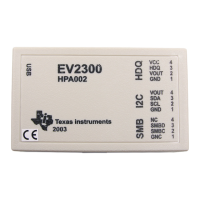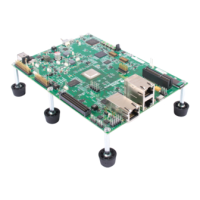DSP/BIOS Components
1-6
1.2.2 DSP/BIOS Configuration Tool
A DSP/BIOS configuration allows you to optimize your application by creating
objects and setting their properties statically, rather than at run-time. This
both improves run-time performance and reduces the application footprint.
The source file for a configuration is a DSP/BIOS Tconf script, which has a
file extension of .tcf. There are two ways to access a DSP/BIOS
configuration:
❏ Textually. You can edit the text
of the script using Code
Composer Studio or a separate
text editor. You code the configuration using JavaScript syntax. See the
DSP/BIOS Textual Configuration (Tconf) User’s Guide (SPRU007) for
details.
❏ Graphically. You can view
configurations in read-only mode
with the DSP/BIOS Configuration
Tool, a graphical editor that
functions as a macro recorder for scripts. The interface is similar to that
of the Windows Explorer. The script is shown in the right pane as you
create it.
You can set a wide range of parameters used by DSP/BIOS at run time. The
objects you create are used by the application’s DSP/BIOS API calls. These
objects include software interrupts, tasks, I/O streams, and event logs.
PRD Periodic function manager
PWRM Power manager (C55x only)
QUE Atomic queue manager
RTDX Real-time data exchange settings
SEM Semaphore manager
SIO Stream I/O manager
STS Statistics object manager
SWI Software interrupt manager
SYS System services manager
TRC Trace manager
TSK Multitasking manager
Module Description

